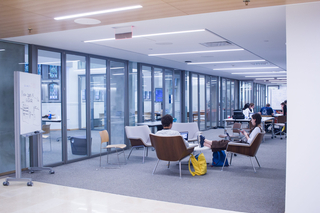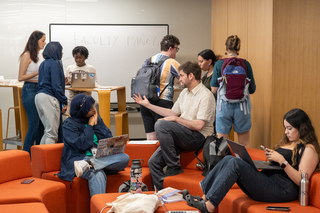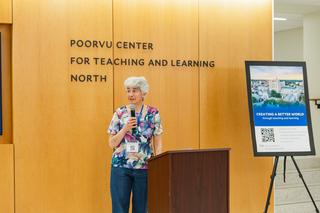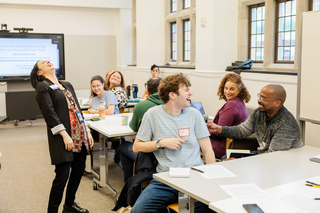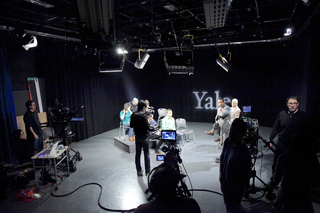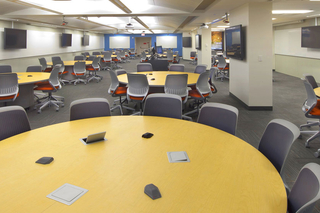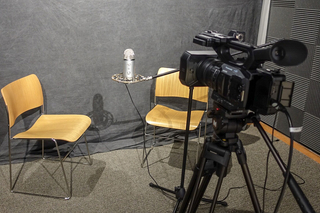Explore Our Spaces
-
Accessibility in the Poorvu Center
The Poorvu Center strives to be a welcoming, accessible space for all students, faculty, staff, and visitors.
-
Learning Commons Shared Space
The Poorvu Center also offers several “touchdown areas” that are informal, open spaces perfect for smaller groups to collaborate.
-
Poorvu Center Classrooms
The Poorvu Center for Teaching and Learning features and maintains several classroom spaces across the University designed to accommodate courses.
-
Poorvu North
Located at the base of Kline Tower, Poorvu North is designed to help us better support our STEM students and faculty.
-
Public Speaking Studio
Practice your pitch, presentation, or lecture by booking time in the Poorvu Center’s public speaking studio.
-
Request a Poorvu Center Room
The Poorvu Center for Teaching and Learning invites members of the Yale community to request use of our spaces for meetings or other events.
-
Teaching Studios
A great place to get your video and audio work completed!
-
TEAL at Yale
Yale’s Technology Enabled Active Learning classroom encourages engaged learning, collaborative projects, and team-based problem-solving.
-
The Recording Studio
The Recording Studio provides instructors and students the opportunity to create educational podcasts and videos with guided technical support.
-
Yale Connect
Yale Connect is the platform used to promote activities, find and register for on-campus or virtual events, and engage with Yale organizations.
We’re here to help!
Reach out to the Poorvu Center team if you have any questions or to learn more about our programs.

